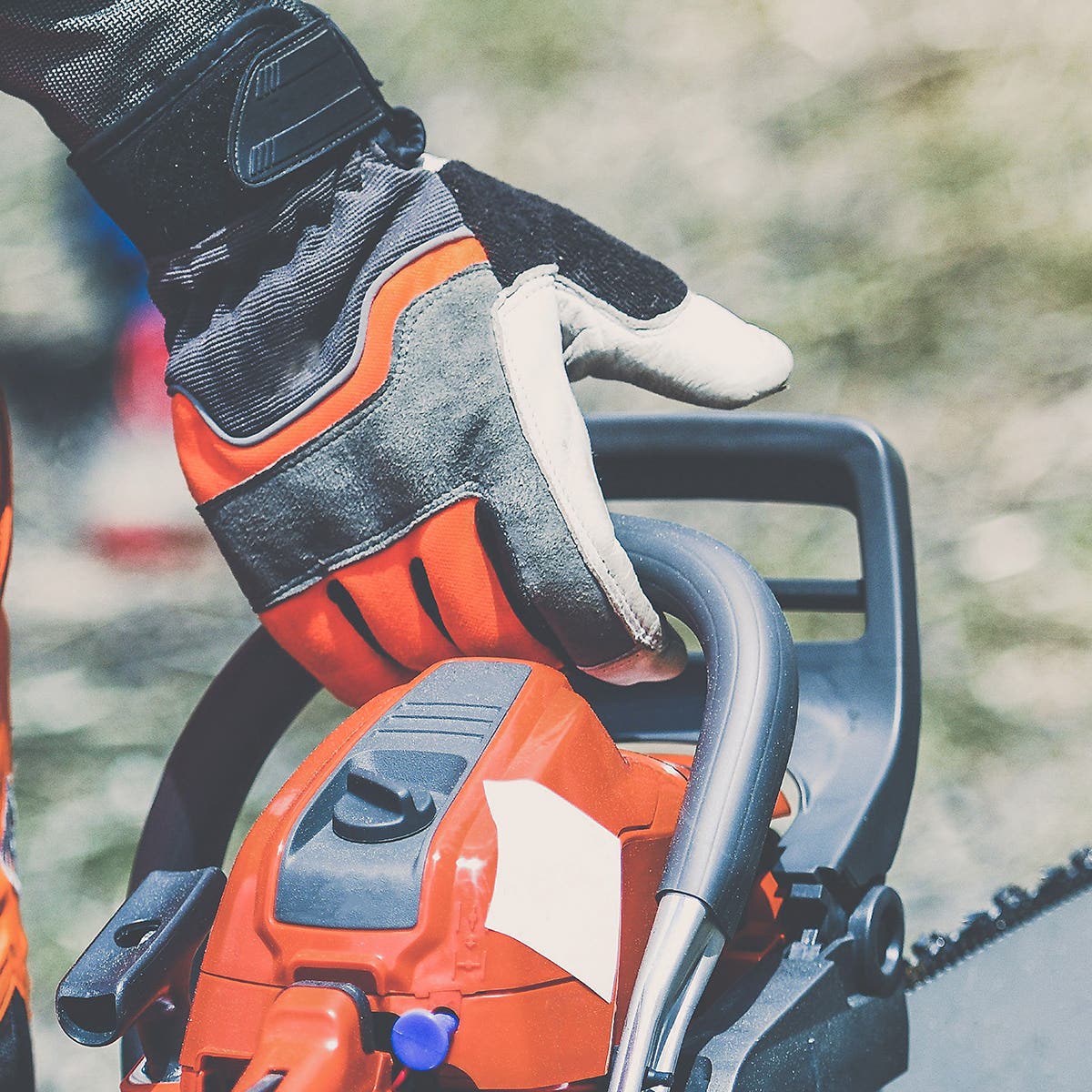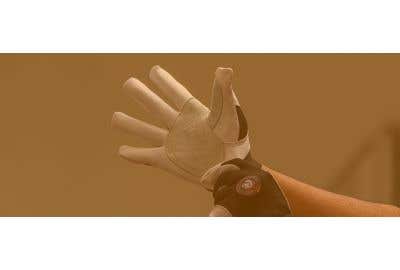There is no mystery or magic to anti-vibration gloves. They are exactly what you would think they would be. They are constructed the same as any standard pair of work gloves but have extra padding on the palms to help absorb and dissipate vibrations from tools. Because the padding is only on the palms, the gloves do little to prevent vibrations in your fingers.
The contents of the padding differ from glove to glove. Some use gel. Some use foam. Some use special air pockets. Regardless of the material, they all work to accomplish the same thing, limit the amount of vibrations passing into your hand, wrist, and arms.
If you’ve never used anti-vibration gloves, it’s important to manage expectations. These gloves aren’t miracle workers. Their job is to dampen tool vibration, not completely eliminate it. So, if you’re looking for a way to remove yourself from vibration hazards, these gloves aren’t the solution. But if you want to reduce your exposure to vibration and avoid long-term issues, anti-vibration gloves might help.
How Vibrating Equipment Impacts Workers
Why are people so concerned about vibrations in their hands, wrists, and arms? As we alluded to earlier, some serious long-term health issues result from vibration exposure.
Hand Arm Vibration Syndrome
The big issue that you should be aiming to avoid is Hand Arm Vibration Syndrome (HAVS). Prolonged exposure to vibrations can cause permanent damage to the blood vessels and nerves in your hands and arms. This irreversible damage can lead to numbness in your fingers, weakened grip, and lack of ability to heal wounds on your hands and arms.
Raynaud’s disease
Raynaud’s disease, also known as white finger syndrome, threatens workers exposed to vibrations. Normally, Raynaud’s is common in people who are exposed to cold conditions. The extreme cold prevents healthy hand circulation and causes areas of the finger skin to become discolored. When exposed to vibration hazards, the damaged blood vessels caused by the vibrations prevent the needed circulation and can result in Raynaud's despite not being exposed to extreme cold.
Carpal Tunnel
If all of that isn't enough, the vibrations can also result in carpal tunnel. Usually, carpal tunnel is caused by repetitive motion damaging the nerves in your hand and leading to numbness and weakened muscles. You hear about carpal tunnel being common for office workers because the repetitive motion of typing on a keyboard causes that nerve damage. Carpal tunnel is also a threat to many construction and factory workers. Still, the increased use of new, more ergonomic tools is helping reduce the number of cases. But repetitive motion isn’t the only way to damage the nerves in your hand. Vibration exposure can cause the same nerve damage, which can also result in carpal tunnel.
General Discomfort
Apart from all the serious issues, the day-to-day discomforts of vibration exposure are enough to make you want to change your ways. After using a hand tool for too long, do you lose feeling in your hand, or does your entire arm get tingly? These are signs that you are damaging your body, and they are completely avoidable.
The real danger of vibration exposure isn't the vibrations themselves; it's how readily we all ignore the clear signs that we are damaging our bodies and causing permeant damage. Listen to your body, don’t try and tough it out, and make choices that give you a safe and healthy future.
Who Should Use Anti-Vibration Gloves?
Alright, truth time. Anti-vibration gloves will not save you from all the previously mentioned disorders, diseases, and syndromes. The best plan of action to avoid HAVS is to try and reduce the time you are exposed to vibrations or avoid them altogether. I know the abstinence method didn't work when you were a teenager, and it won't work now. In this case, it’s not an option for most workers. Instead, try using tools that are designed to reduce vibration transfer to the hand and take breaks. Giving your body time to bound back is essential when exposed to any hazard.
Once you've done all that, if you want to take your safety a step further, that's where anti-vibration gloves come in. If you are putting in all that effort to avoid HVAS, why not push it a little further and wear a pair of anti-vibration gloves for good measure?
Another very important caveat to note with anti-vibration gloves is they are really only effective at absorbing high-frequency vibrations. Smaller hand tools usually emit high-frequency vibrations. So, tools like drills, saws, grinders, and sanders are ideal for pairing with a set of anti-vibration gloves.
So, most construction workers, automotive workers, and landscapers could benefit from having a pair of anti-vibration gloves.
What is ANSI S2.73 / ISO 10819
Some anti-vibration gloves are ANSI/ISO rated for vibration resistance. If you’re familiar with the other ANSI glove standard, like cut resistance, you’ll probably expect to see a system of anti-vibration levels.


That's not how this one works. The ANSI/ISO anti-vibration is a pass/fail standard. Gloves either meet the standard or don't, and there aren't any levels. For this standard, gloves are required to meet a few physical specifications. They cannot be fingerless gloves. They need to have padding that covers the full palm without any gaps. The padding needs to be a maximum of 8mm thick.
With all those physical requirements met, the gloves also need to meet some performance metrics. Transmission of medium rate frequencies needs to be reduced by 10%, compared to not wearing a glove at all. Transmission of high-rate frequencies needs to be reduced by 40%.
Any glove that says it meets the ANSI S2.73/ISO 10819 standard must meet all of the above criteria. A 40% reduction in high frequency vibrations goes a long way if you want to reduce your vibration exposure.
Controversy Behind Anti-Vibration Gloves
If you are in the process of researching anti-vibration gloves, you’re going to see a lot of controversy on if these gloves actually work or if they are just a gimmick. Most say it’s a gimmick. Some studies have shown that anti-vibration gloves can increase the amount of vibration transferred to your hands and wrists. Other individuals point out that the lack of vibration resistance for the finger renders these gloves useless.
These are both great points. We mentioned earlier that these gloves are not effective at protecting you from low-frequency vibrations. Using anti-vibration gloves with low-vibration frequency tools like jackhammers or rammers could potentially do more harm than good. Also, some cheaply made glove might claim to be vibration-resistant but just has some extra padding. These low-quality gloves may cause more harm at any vibration frequency. It’s important to buy gloves from a trusted brand from a reputable retailer. Beware of knockoffs and gimmicks.
The point about the lack of finger protection is valid as well. Even with the ANSI rating, there is no requirement to prevent vibrations from transferring to your fingers. This is odd because power tools famously require fingers to operate, and fingers are not immune to all of the disorders associated with vibration exposure. This might be the strongest argument against anti-vibration gloves.
If you remember from earlier, we mentioned that these gloves aren't the solution for vibration hazards. To protect your body from the permeant harm caused by vibration exposure, you need to follow a list of precautions that do not include anti-vibration gloves. Once you've started utilizing ergonomic tools, learned when to give your hands a break, and figure out how to reduce your overall exposure, then you can consider adding a pair of anti-vibration gloves for good measure.
Imagine you are getting into the passenger seat of a car, and you know the driver is not the best. You're going to sit straight in that seat, buckle up, and maybe lock up the seatbelt for good measure. Locking up the seatbelt is not necessary, but it’ll help in the event of a crash. That’s essentially what anti-vibration gloves are, they may not be necessary, but they will help when faced with a hazard.
Protect Workers With Anti-Vibration Gloves From PowerPak Civil & Safety
Hopefully, this article helped shine some light on the topic of anti-vibration gloves. This is a confusing topic, and after researching and reading all of the controversy and opinion shouting online, it’s easy to get confused or put off on the topic. When writing this article, and any article for that matter, we always aim to lead with safe information. We don’t want to sell anything that will cause harm. Read about more types of construction gloves.
It is 100% your choice to add this extra measure of protection. If you decide to try anti-vibration gloves, contact us a PowerPak, and we'll get you started with a reputable pair today.







